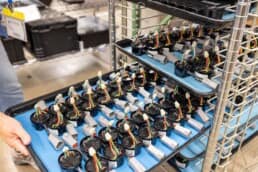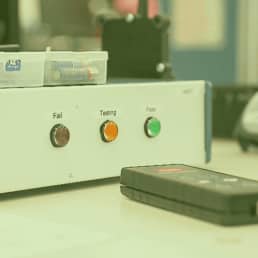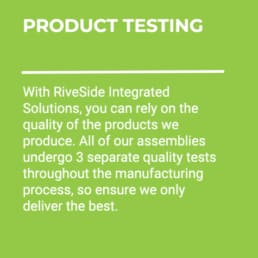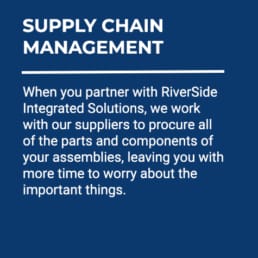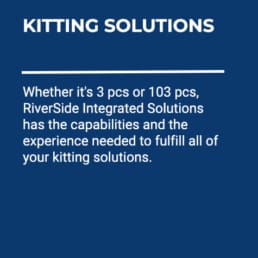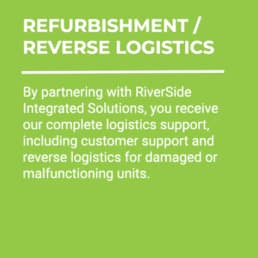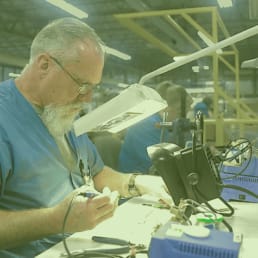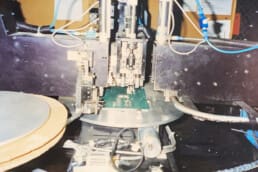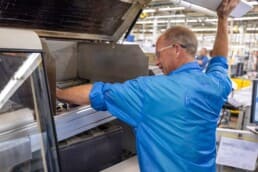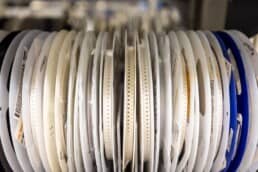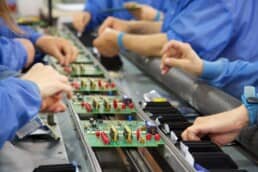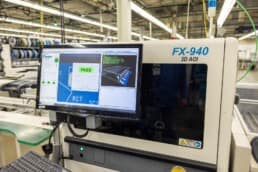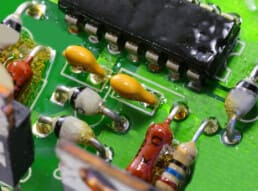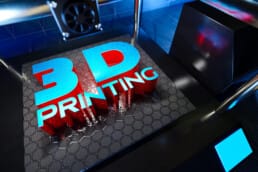Design for manufacturing (DFM) is designing products to ease manufacturing and create a better, more cost-effective product. DFM is a vital product development step. It looks to simplify and optimize the design for high value and efficiency during production. It also looks to increase integrity in the field. The goal of DFM is to reduce manufacturing costs and avoid costly disruptions without sacrificing quality or performance. DFM is an element of lean manufacturing practices. It focuses on getting the design right the first time. It minimizes rework and waste during production and assembly. The DFM approach is an excellent cost-saving strategy for original equipment manufacturers (OEMs) and contract manufacturers. It increases operations efficiency and reduces time to market. Products must be designed from the beginning to be manufacturable. The DFM process should occur early in the design phase of a project. It should engage all the key parties. This includes designers, tool fabricators, raw material suppliers, contract manufacturers and other stakeholders. The goal is to tap into the experience of each of these experts. The team will scrutinize the current design from many angles to identify a more cost-effective solution that maintains quality. Part design should be focused on the ease of manufacturing. It can help reduce costs and produce a robust and reliable production process. There are several design aspects that engineers will need to consider throughout the process. This includes part geometry, location and shape of critical surfaces and size. Additionally, the DFM process should consider material selection, tolerancing and the selection of critical dimensions. All of these factors impact manufacturability. DFM allows OEMs to create parts that can be reliably manufactured in large volumes. They do this by determining the right material, color, durometer, dimension and tolerance choices for each part. This also helps minimize scrap rates and losses. OEMs need to ensure the part is as easy to manufacture as possible. This will result in more efficient production, better quality and lower cycle times. Below are several ways OEMs gain value from the design for manufacturing process. Read RIS’ brief article for additional tips on DFM for electronics. OEMs often rush to get a new product to market. It can be tempting to shorten or skip the DFM process. So it’s important to remember that changes to the design become exponentially more expensive as the product advances. A thorough DFM upfront will help find any optimizations or issues before they significantly impact the timeline or budget. The adage “an ounce of prevention is worth a pound of cure” is very accurate regarding DFM. If the part design is off even by a small margin, it can drastically alter its aesthetics and functionality. This is especially true for parts that require tooling or molds, which are often expensive and time-consuming to generate. The DFM process typically includes computer simulations of the design so the team can fully visualize the product. Frequently, this step yields additional insights and optimizations that may have otherwise gone unfound. The result is a more functional and aesthetically pleasing product. A more optimized part design isn’t the only benefit. The DFM process will likely improve specialized tooling designs such as jigs, fixtures and dies. Without consideration during product development, the tooling may be unnecessarily complex or inefficient and lead to production challenges. The DFM process ensures that the part can be manufactured. Though seemingly obvious, many products reach production before someone realizes they cannot be effectively manufactured in their current design. What a nightmare. To avoid this situation, OEMS must value and emphasize the DFM process. That means taking the time to make the necessary revisions to improve part design and manufacturability before initiating production. DFM procedures often focus on production, but it is crucial that OEMs also consider product assembly. This can help them ensure new or existing products get designed for efficient assembly. OEMs need to think through assembly line steps. How the part design will impact the assembly process is crucial. Whether you perform assembly in-house or outsource this activity to a contract manufacturer like RIS, this is true. Companies should map out the physical flow of materials through each product assembly stage. This helps identify areas for improvement and optimize the process. At RIS, we help our customers work through these processes. That way we are all confident the project has been optimized as much as possible before production begins. Less is often more when it comes to product assembly. For instance, a best practice is to minimize the total parts and tools utilized. You can then optimize their placement, including orientation. If performed properly, designing and optimizing for assembly will reduce costs and avoid disruptions without sacrificing quality or performance. Specific design features such as tight tolerances and engraving significantly impact part cost. These drive up costs and directionally reduce production efficiency. As part of the DFM process, OEMs should look at design alternatives. They should ensure that any complex or intricate features are “must-haves.” Implementing a DFM process will also encourage you to look for opportunities to reduce raw materials. You might replace solid part sections with more hollow sections without sacrificing quality or integrity. These design adjustments may seem like a slight reduction in material. Still, when multiplied over many production runs, the result can significantly decrease manufacturing costs. Creating a product is often as important as the product itself. Suppose the engineer neglects to consider the creation process during the design stage. In that case, building standardization and efficiencies in production and assembly can be challenging. Designers must remember that production floor employees will follow the blueprints provided. They cannot easily make design adjustments on the fly. Thus, the design must be right the first time.THE COLLABORATIVE NATURE OF DFM

THE VALUE OF DESIGN FOR MANUFACTURING
SIGNIFICANT COST AND TIME SAVINGS

OPTIMIZE FUNCTIONALITY AND AESTHETICS
VERIFY MANUFACTURABILITY
CONFIRM ASSEMBLY
DRIVE SIMPLIFICATION AND MINIMIZATION
DRIVE PRODUCTION EFFICIENCIES
About RiverSide Integrated Solutions
RIS is an advanced contract manufacturer providing robust solutions in circuit board assembly and product assembly. We employ more than 350 people and provide services to OEMs worldwide. We operate two state-of-the-art manufacturing facilities within the US.
With all of the choices in contract manufacturers out there, we know it can be challenging to find someone who understands your business model and has your best intentions in mind. RIS has always proven to be a win-win-focused relationship.
As your one-stop shop, we have the capabilities, capacity, quality assurance standards and resources to support all of your manufacturing needs. We understand that supply chain management is complex and very time-consuming, so we urge our customers to utilize us in the fullest capacity.
Our total-package solutions include:
- Extensive supply-chain network
- Full box-build assembly
- Dedicated Program Team
- Warehousing, kitting and drop-shipping capabilities
- Reverse logistics
- Flexible order fulfillment
- Scalability to meet your needs
Contact us today at (507) 523-3220 to see how we can help with your manufacturing project, or click contact us for a quote.



